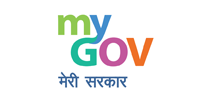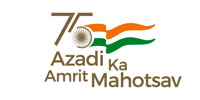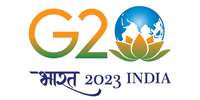Dermatology
The department was set up in 1956 for specialized tertiary care of patients with dermatological disorders including leprosy and STD.
Location Of The department:
5TH Floor, New OPD Building VMMC & Safdarjang Hospital, New Delhi.
At present there is no content available for this section, once content will be available would be updated.
Outdoor Services:
The department offers management for a large number of dermatologic disorders including psoriasis, vitiligo, hair disorders, nail disorders, leprosy and sexually transmitted diseases.
- General OPD - Room No. 526, 527, 528, 529,534,535,538
- CGHS OPD - Room No. 536,537
- Specialty clinic- 526 A
- Therapy Room/Minor OT- 533
- Side lab- 533A
- Main OT- 532
- Laser room-556
- Phototherapy room-556A
- Seminar room- 530
- Library and departmental museum- 541 C
- Histopathology room- 541 D
- Male STD- 546
- Female STD- 547
- Sample collection room- 542B
- STD Laboratory & associated rooms- 544, 545, 544A, 545 A, 550, 551
Tests performed in the OPD (All procedures including surgeries, phototherapy and lasers are free of charge):
- Woods lamp examination
- Dermoscopy
- KOH examination
- Gram’s stain
- Z-N stain for AFB
- Slit skin smear for M.leprae and L.donovani
- Tzanck smear
- Patch test
- Skin & Nail biopsy
Other patient care services:
Specialised work being done by the department
The department is functioning as a Regional STD Teaching, Training & Research Centre, Govt. of India and consists of four wings, Clinical, Laboratory, ART Clinic and Epidemiological. The Centre gives direct support to the public health programme of immense importance i.e. National AIDS Control Programme.
STD Services
The STD wing of the department is functioning as the Regional STD Teaching, Training & Research Centre, Govt of India since 1956 and has been recognized as the Apex Centre for STIs by NACO in 2009. The STD laboratory is NABL- accredited. It provides laboratory services including microscopy, serology and microbiological support in the diagnosis of various STIs .
The services provided by the department include
- Male & Female STD Clinics: functioning as per NACO & DSACS guidelines; the patients are provided clinical examination, diagnostic tests , serological tests, and treatment of STIs & HIV.
- Counseling is also provided by male and female STI counsellors.
- Research, teaching and training.
- Epidemiological studies and surveys
STD Specialists, Microbiologists and Epidemiologists are jointly carrying out all the above functions:
- STD Screening.
- Diagnostic work: The Centre has laboratory diagnostic facilities for diagnosis of all STD’s like Syphilis (screening and confirmation), Chancroid (smear and culture), Herpes (smear and ELISA), Donovanosis (smear), Gonorrhea (smear, culture and antibiotic sensitivity), Chlamydia infections (Ag. and Ab. Detection ELISA), Trichomoniasis (smear and culture), Candidiasis (smear, culture and antifungal susceptibility), Bacterial Vaginosis (smear), HIV, HBsAg, HCV, HCMV -all by ELISA. The patients are offered treatment based on aetiological diagnosis. Rest of the infections are treated clinically.
- Follow up of STD and HIV patients:
- Epidemiological Work including partner notification for clinic patients , surveillance of STD/HIV/AIDS for management and control of STDs, nationwide Annual Sentinel Surveillance of NACO (STD & ANC) every year.
- Research & training of in-service medical and paramedical staff from all the States of Northern Region
- External Quality Assurance both for VDRL, HIV, CD4/CD8 testing and antimicrobial susceptibility testing of N. gonorrhoeae are regularly carried out and being participated in.
- Teaching and Academics- The faculty of this Centre are actively involved in the teaching and training of MBBS students and post graduate students of VMMC and also students of nursing, rehabilitation courses.
- Leprosy
The department has the Urban Leprosy Centre. We provide comprehensive management of leprosy including registration , diagnosis and treatment including reactions, complications, and disabilities. Multi Drug Therapy for treatment is also provided free to the patients. The National leprosy elimination programme is being followed by the department.
Leprosy patients are seen daily and in speciality clinics held:
Tuesday (2-4pm) : New leprosy cases
Thursday (2-4pm): Follow up leprosy cases
Inpatient services
Inpatient treatment is offered for autoimmune vesicobullous diseases, connective tissue disorders as well as cutaneous adverse drug reactions. We are also well equipped to handle dermatological emergencies like Stevens Johnsons syndrome-Toxic Epidermal Necrolysis, severe autoimmune vesicobullous disorders like pemphigus vulgaris , Angioedema , erythroderma , acute SLE etc. the faculty and residents are available round the clock.
Facilities:
Follow up Clinic - Monday
Leprosy Clinic - -
h New Cases - Tuesday
h Follow up Cases - Thursday
Vitiligo Clinic - Friday
STD Clinic everyday (Monday to Saturday)
Minor of facilities:
- Skin biopsy
- Nerve biopsy
- Skin scraping for KOH
- Gram Stain
- Tzanck Smears
- Slit Skin Smears for leprosy
- Chemical Cauterisation
- Paring of Corns, Calluses
- Intralesional steroids (for keloid, alopecia areata etc.)
- Needle Extirpation (for Milia, Molluscum)
- Cryo Therapy
Surgical Procedures:
- Vitiligo surgery
- Acne surgery
- Nail surgery
- Radio frequency
- Comedone Extraction
- Scar removal
- Mole removal
- Chemical Peeling
- Electrocautery
Diagnostic facilities in Collaboration with ICMR
- PCR for cutaneous tuberculosis and leishmnaiasis
- ELISA for cutaneous tuberculosis
- Culture for AFB
- Culture for fungus
- Culture for leishmaniasis
- Study of the etiopathogenesis of psoriasis
| Sr. No. | Name of Faculty | Designation | |
|---|---|---|---|
| 1 | Dr. Niti Khunger | Professor & Consultant | |
| 2 | Dr. R. K. Anand | Chief Marketing Officer (Higher Administrative Grade) | |
| 3 | Dr. A. K. Saxena | Principal Consultant | |
| 4 | Dr. Poonam Puri | Professor & Consultant | |
| 5 | Dr. Sanchita Karmakar | Head, Consultant & Professor | |
| 6 | Dr. Sunil Dayal | Consultant | |
| 7 | Dr. Premlata | Chief Marketing Officer (Senior Administrative Grade) | |
| 8 | Dr. Sunil Kumar | Assistant Professor & Consultant | |
| 9 | Dr. Sushruta Kathuria | Specialist | |
| 10 | Dr. Shikha Bansal | Associate Professor | |
| 11 | Dr. Prashant Verma | Associate Professor | |
| 12 | Dr. Neha Kumar | Specialist Gr-II | |
| 13 | Dr. Geeti Khullar | Specialist Gr-II | |
| 14 | Dr. Payal | Specialist Gr-II | |
| 15 | Dr. Avneet Monga | Specialist Gr-II | |
| 16 | Dr. Sumathi Murlidhar | Consultant & Professor (Microbiology) | |
| 17 | Dr. Aradhana Bhargava | Assistant Professor | |
| 18 | Dr. Charan Singh | Consultant |
Apart from daily OPD, we also have various special clinics for chronic dermatological conditions;
| Sr. No. | Day | Clinic |
|---|---|---|
| 1 | Monday | Allergy and Drug Reaction Clinic |
| Autoimmune & Bullous Disease Clinic | ||
| Psoriasis Clinic | ||
| 2 | Tuesday | Leprosy clinic & Hair Clinic. |
| 3 | Wednesday | Phototherapy, Scar and Laser Clinic. |
| 4 | Thurday | Nail clinic, Pediatric & Genodermatosis Clinic. |
| 5 | Friday | TB & Granulomatous Clinic |
| Vascular anomalies Clinic | ||
| Vitiligo & Pigmentary disease and Histopathology. |
| Sr. No | Location | Days | Specialist | Phone No. | Room No. |
|---|---|---|---|---|---|
| 1 | 5th B-Wing, New OPD Building | Monday to Saturday | Dr. Sushruta Kathuria | +91-11-26707288 | 526-A |
| 2 | Monday to Saturday | Senior Resident | 527 | ||
| 3 | Monday To Saturday | Dr. Prashant Verma | 528 | ||
| 4 | Monday to Saturday | Dr. Niti Khunger | 529 | ||
| 5 | Monday to Thursday & Saturday | Dr. Poonam Puri | 534 | ||
| 6 | Monday to Thursday & Saturday | Dr. Sunil Dayal | 535 | ||
| 7 | Monday to Saturday | Dr. Shikha Bansal | 538 |
Articles published by department of Dermatology in last 1 year
Dr. V. Ramesh (HOD, Department of Dermatology)
Recent Publications
- Verma S, Kumar R, Katara, GK.Singh LC, Negi NS, Ramesh V, Salotra P. Quantification of parasite load in clinical samples of lesihmaniasis patients: IL-10 correlates with parasite load in visceral leishmaniasis. PLoS ONE 5(4):e10107. Doi:10.1371/journal.pone.0010107
- Techanakul T, Sethuraman G, Zlotogorski A, Horev L, Macarov M, Trainer A, Fong K, Lens M, Medenica L, Ramesh V, McGrath JA, Lai-Cheong JE. Novel and recurrent FERMT1 gene mutations in Kindler syndrome. ActaDermato-Venereol 2011;91:267-270
- Ramesh V, Sen MK, Nair D, Singla R, Sengupta A. Cutaneous tuberculosis caused by multidrug-resistant tubercle bacilli: report of three cases. Int J Dermatol 2011;50(3):300-303
- Puri P, Singh A, Ramesh V. Facial nodule in a 34-year-old man. Ind J Dermatol 2011;56(2):222-223
- Ramesh V, Singh A, Capoor M. A recalcitrant facial plaque: fixed cutaneous sporotrichosis. Int J Dermatol 2011;50(3):367-368
- Malhotra P, Singh A, Ramesh V. Basal cell carcinoma in the North Indian population: clinicopathologic review and immunohistochemical analysis. Ind J Dermatol Venereol Leprol 2011;77(3):328-330
- Ramesh V, Katara GK, Verma S, Salotra S. Miltefosine as an effective choice in the treatment of post-kala-azar dermal leishmaniasis. Br J Dermatol 2011;165:411-414
- Ramesh V. Cutaneous tuberculosis and esthiomene. Int J GynecolObstet 2011;114(3):293-294
- Ramam M, Malhotra A, Tejasvi T, Manchanda Y, Sharma S, Mittal R, Ramesh V. How useful is the Mantoux test in doubtful cases of cutaneous tuberculosis ?Int J Dermatol 2011;50:1379-1382
- Bala M, Mullick JB, Muralidhar S, Kumar J, Ramesh V. Gonorrhoea and its coinfection with other ulcerative, non-ulcerative sexually transmitted and HIV infection in a Regional STD Centre. Ind J Med Res 2011;133:346-349
- Al Aboud K, Narang K, Ramesh V. Wedding ceremony and skin diseases; a need for vigilance! J Pak Assoc Dermatol 2011;21:109-111
- Al Aboud K, V.Ramesh. Continuing medical education (CME): A reappraisal. Canadian Med Education J 2011;2(2):e91-3
Chapter in a Book
- Desjeaux P, Ramesh V. Post-kala-azar Dermal Leishmaniasis: Facing the Challenge of Eliminating Kala-azar from South Asia. In: Kala-azar in South Asia. Current Status and Challenges Ahead, Chapter 11, Eds. Jha TK, Noiri TK, Springer Verlag, Dordrecht, 2011, pp111-124
Dr.Niti Khunger
Recent Publications
- 012-Khunger N, Kumar C. A clinico-epidemiological study of adult acne: Is it different from adolescent acne? Indian J Dermatol Venereol Leprol. 2012 May;78(3):335-41.
- 2012-Khunger N, Kandhari R. Ingrown toenails. Indian J DermatolVenereolLeprol. 2012 ;78(3):279-89.
- 2011-Khunger N, Pahwa M. Dramatic response to topical timolol lotion of a large hemifacial infantilehaemangioma associated with PHACE syndrome. Br J Derm 2011; Apr;164(4):886-88.
- 2011-Khunger N, Khunger M. Subcision for Depressed Facial Scars Made Easy Using a Simple Modification. DermatolSurg 2011; Apr;37(4):514-7
- 2011-Khunger N, Bhardwaj D, Khunger M. Evaluation of CROSS technique with 100% TCA in the management of ice pick acne scars in darker skin types. J CosmetDermatol. 2011 Mar;10(1):51-7.
- 2011 –Khunger N, Sacchidanand S. Standard guidelines of care for sclerotherapy. Indian J Dermatol Venereol Leprol. 2011 Mar-Apr;77(2):222-31.
Chapters edited
- 2012-Khunger N, Kandhari R. Thin split thickness skin grafting for vitiligo. ACSI Textbook on Cutaneous and Aesthetic Surgery. Ed Mysore V. Jaypee Publications, India.
- 2012-Khunger N, Goel A. Complications of Vitiligo Surgery in ACSI Textbook on Cutaneous and Aesthetic Surgery. Ed Mysore V. Jaypee Publications, India.
- 2011-Khunger N. Facial Peels in Aesthetic Medicine-Art and Techniques. Eds. Prendergast, Peter M. / Shiffman, Melvin A. (Hrsg.) Aesthetic Medicine Art and Techniques. 09/2011, 1. Auflage (2012), Springer Berlin.
Conferences
- Joint Conference of Association of Cutaneous Surgeons (I) along with the Spring meeting of International Society for Dermatologic Surgery (ISDS), New Delhi 12-15 Apr 2012.
- Conference on aesthetics on 16 september, 2011.
- Monthly meet of IADVL (Delhi state branch) on 16th of March 2012.
At present there is no content available for this section, once content will be available would be updated.
At present there is no content available for this section, once content will be available would be updated.
The department trains interns, post graduates students of IP University and trainees from other institutions, in Dermatology, Leprosy, Dermatosurgery and STD.
The teaching of PG students is by case presentations, seminars, Journal clubs and Histopathology demonstrations. There is an updated library with recent text books and journals for ready referrals and well-equipped museum. There is a 5 headed teaching microscope for teaching & training in dermatopathology.
The department has extensive publications in National and International journals and textbooks.
At present there is no content available for this section, once content will be available would be updated.
At present there is no content available for this section, once content will be available would be updated.
- Back to previous page
- |
-
Page last updated date:06-08-2024 01:00 PM












